When it comes to navigating volume-based indicators in trading, it's like having a compass to steer you through the market's twists and turns. Understanding how to interpret volume signals can be the key to unlocking profitable opportunities and staying ahead of market movements.
By mastering the top 10 tips for utilizing volume-based indicators effectively, you can gain a deeper insight into market dynamics and make more informed trading decisions.
So, are you ready to explore these essential strategies and take your trading game to the next level?
Understanding Volume-Based Indicators
When delving into the realm of volume-based indicators, understanding their significance becomes pivotal for informed trading decisions. Volume, an essential component in trading, can provide valuable insights into market dynamics.
On-Balance Volume (OBV) and Money Flow Index (MFI) are indicators that utilize volume to assess buying and selling pressure in the stock market. OBV tracks the cumulative volume to predict stock direction based on market conviction, while MFI incorporates both price and volume to identify entry points and potential overbought or oversold conditions.
Additionally, Volume-Weighted Average Price (VWAP) considers the interplay between price and volume, offering a comprehensive view of the average trading price. The Accumulation/Distribution Line serves as an accumulation/distribution indicator by revealing trends in both volume and price relationship for informed trading strategies.
Importance of High Volume Analysis
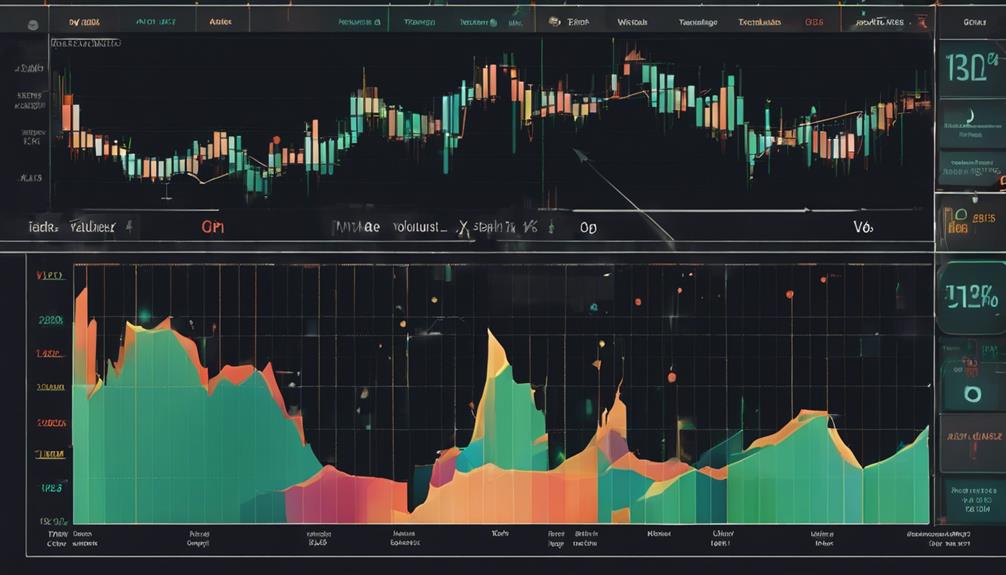
Analyzing high volume is essential for interpreting market signals and identifying potential trading opportunities. Volume patterns can indicate the strength of price movements, with spikes often correlating with significant market changes.
Volume as Market Signal
High volume analysis serves as a critical indicator, revealing the level of interest and participation in a stock. When trading volume surges, it often accompanies significant price movements, indicating potential trend reversals or breakout opportunities.
By paying attention to volume spikes, traders can better understand market sentiment and direction, aiding in decision-making processes. Moreover, monitoring volume levels is essential for identifying key support and resistance levels, which can help predict potential price movements.
Recognizing the importance of volume as a market signal allows traders to have a more comprehensive view of the market dynamics, empowering them to make informed trading decisions based on the insights gained from high volume analysis.
Interpreting Volume Patterns
To interpret volume patterns effectively in trading, understanding the significance of high volume analysis is paramount. High volume analysis is crucial for identifying strong market interest and potential price movements. Volume patterns can indicate significant market activity, providing valuable insights for making informed trading decisions.
Distinguishing between noise and meaningful trading signals is simplified through a comprehension of high volume analysis. High volume levels often align with essential market events and impactful price movements, making them key indicators for traders. Accurate interpretation of volume patterns is essential for developing successful trading strategies based on volume-based indicators.
Utilizing Volume RSI Effectively
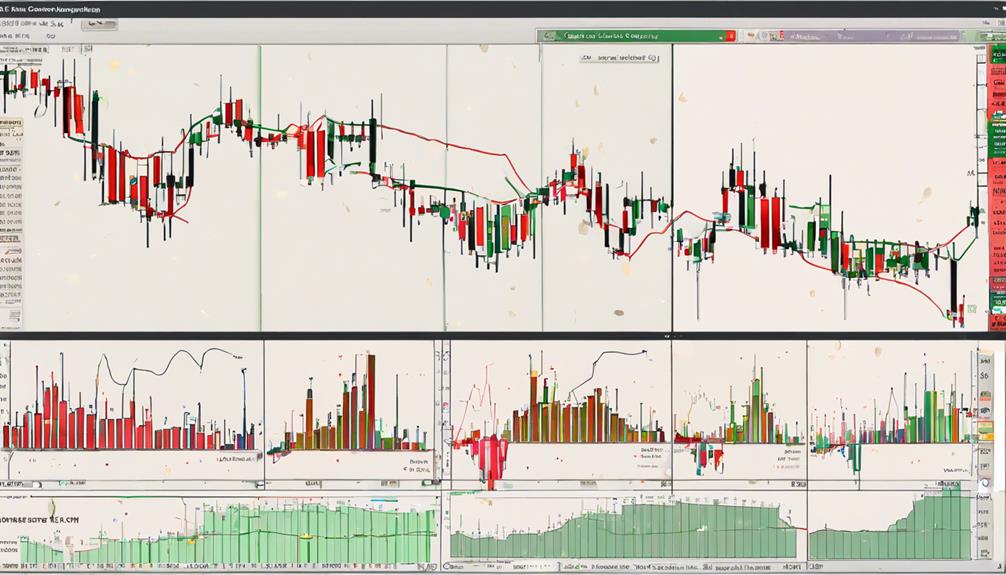
When utilizing Volume RSI effectively, traders can gain valuable insights into market strength and momentum dynamics. This momentum oscillator combines price and volume data to assess market conditions.
Readings above 50 on the Volume RSI indicate bullish momentum, while readings below 50 signal bearish momentum. Traders use Volume RSI to confirm price trends, identify potential reversals, and recognize overbought or oversold conditions.
By analyzing buying and selling pressure, Volume RSI helps traders make informed decisions. Incorporating volume data enhances the RSI calculation, offering a more comprehensive view of market dynamics and trend strength.
Utilize Volume RSI to understand market momentum and potentially predict future price movements with greater accuracy.
Interpreting Volume Price Trend Indicator
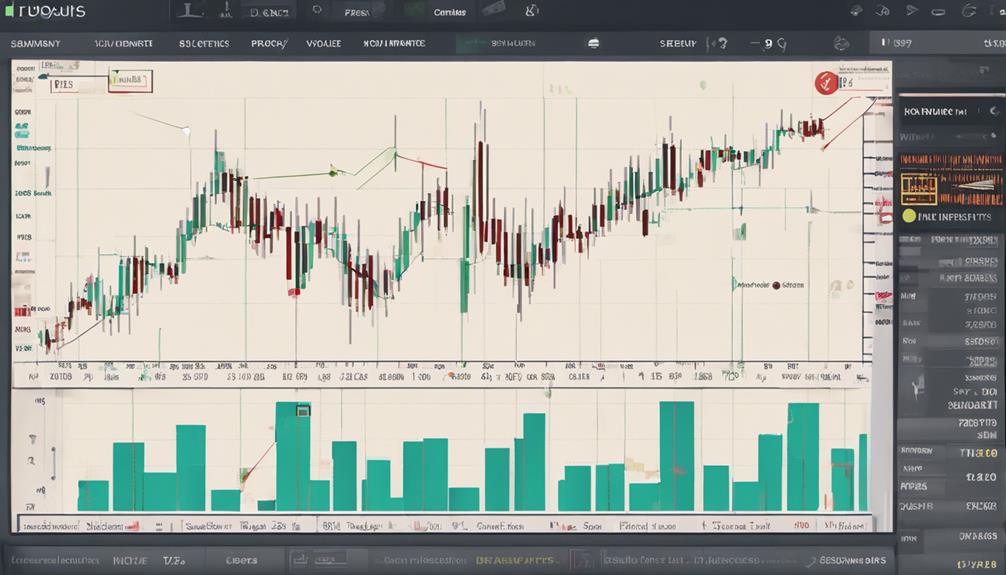
To deepen your understanding of market dynamics beyond the Volume RSI, the next indicator to explore is the Volume Price Trend Indicator (VPT). VPT calculates volume multiplied by percentage price change, revealing the interplay between price movement and volume activity. Here are some key points to consider when interpreting the VPT:
- Rising VPT indicates strong price momentum fueled by high volume, suggesting buying pressure.
- Falling VPT may signal potential price weakness or a reversal, indicating diminishing volume activity.
- Traders utilize VPT to confirm price trends and anticipate market moves based on volume analysis.
- VPT helps identify shifts in buying or selling pressure, offering insights into market dynamics.
- Understanding VPT can enhance your ability to gauge price momentum and potential market movements effectively.
Money Flow Index for Volume Assessment
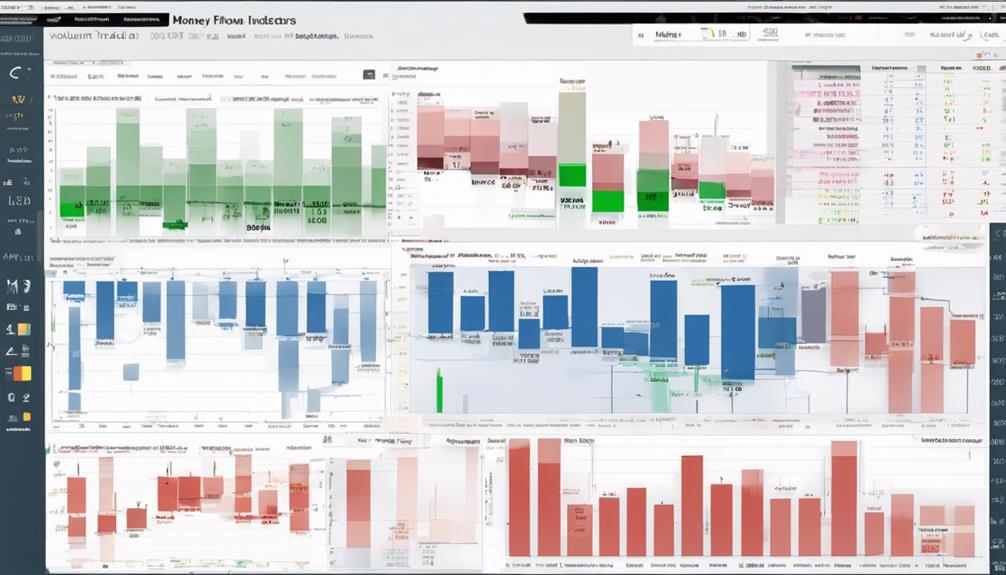
Exploring the Money Flow Index (MFI) provides traders with a comprehensive tool for analyzing buying and selling pressure in the market. The MFI effectively combines volume and price data to gauge the strength of market trends. By identifying overbought and oversold conditions, traders can anticipate potential reversal points.
Moreover, the MFI helps in spotting divergences between price and volume, offering valuable trading signals. Acting as a volume-weighted Relative Strength Index (RSI), the MFI gives a deeper insight into market sentiment by considering both price and volume dynamics. Integrating the MFI into trading strategies can enhance decision-making processes and improve overall trading performance.
Insights From Chaikin Money Flow Indicator
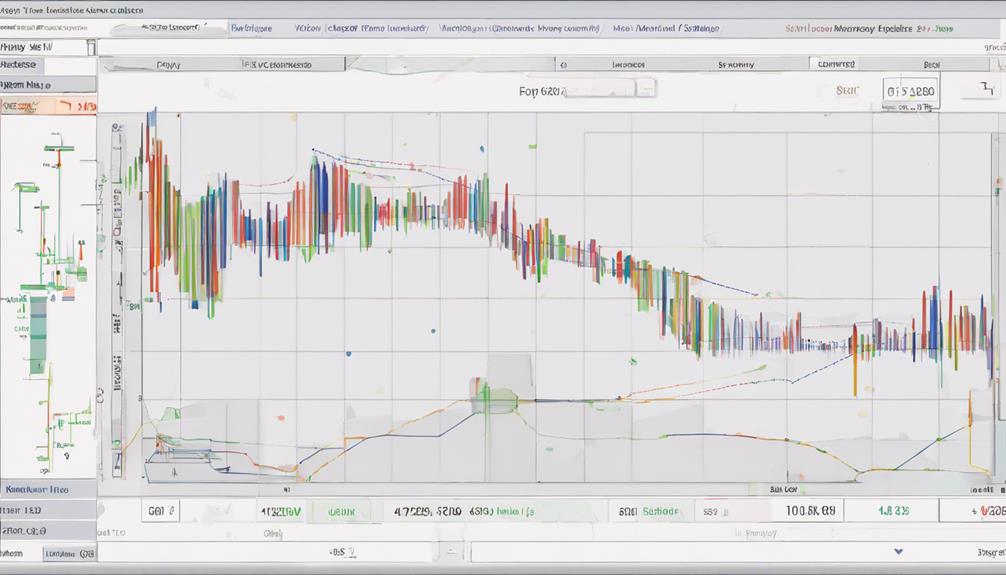
The Chaikin Money Flow (CMF) indicator serves as a valuable tool for traders, measuring buying and selling pressure through a combination of price and volume data.
When using the CMF indicator, keep the following insights in mind:
- CMF above the zero line signals buying pressure, while below indicates selling pressure.
- Crossing the zero line on CMF can generate buy or sell signals, highlighting potential trend reversals.
- CMF helps confirm breakout strength and identifies false breakouts in the market.
- Institutional accumulation or distribution can be tracked using the CMF indicator for strategic trading decisions.
Analyzing Accumulation/Distribution Patterns
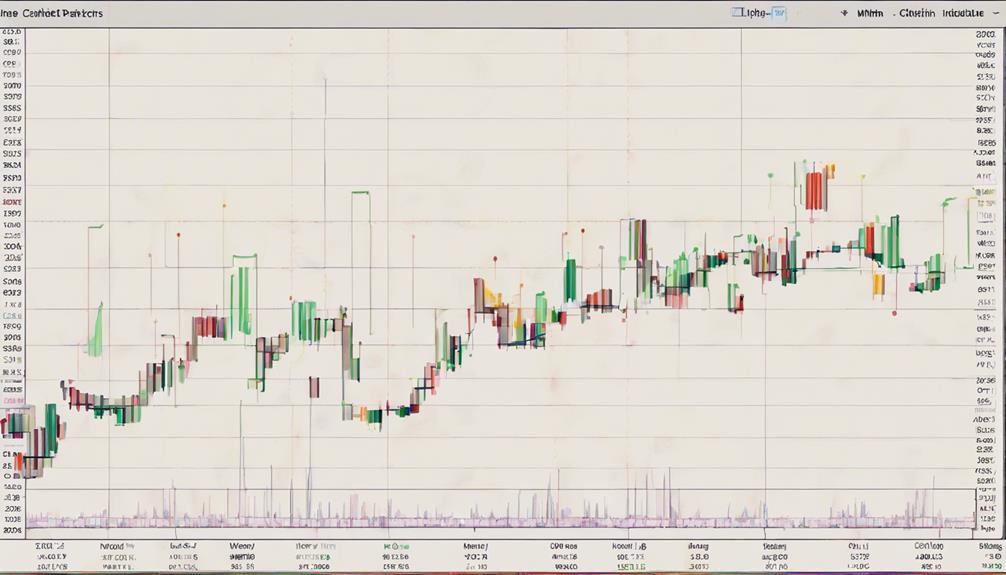
When analyzing accumulation/distribution patterns, you'll focus on:
- Volume impact analysis
- Distribution trend evaluation
These patterns provide insights into the strength of buying or selling pressure in the market. By understanding these patterns, you can anticipate potential price movements and make well-informed trading decisions.
Volume Impact Analysis
To analyze Accumulation/Distribution patterns for volume impact effectively, consider the fluctuations in buying and selling pressure within the market. Understanding these patterns can provide valuable insights into market sentiment and potential price trends. Here are some key points to enhance your volume impact analysis:
- Rising Accumulation indicates a potential bullish trend as investors accumulate shares.
- Falling Distribution suggests a bearish sentiment as investors sell shares.
Analyzing Accumulation/Distribution patterns helps predict future price trends influenced by volume activity.
Utilizing these patterns can improve trading strategies for better decision-making processes.
Volume-Based Indicators play a crucial role in assessing market dynamics and making informed trading decisions.
Distribution Trend Evaluation
Navigating the analysis of Distribution Trend Evaluation involves a careful examination of Accumulation/Distribution patterns to assess market trends effectively. By observing these patterns, traders can interpret the relationship between price movements and trading volume.
A rising Accumulation/Distribution line signifies an accumulation of shares, indicating potential price uptrends, while a declining line suggests distribution, signaling possible downtrends. Analyzing these patterns aids in predicting future price movements based on volume activity. Traders rely on Accumulation/Distribution patterns to confirm existing price trends and anticipate market behavior.
Understanding these patterns is essential for conducting accurate volume-based analysis and making informed trading decisions. By incorporating Accumulation/Distribution evaluations into your analysis, you can enhance your ability to predict market trends and optimize your trading strategies.
Ease of Movement Indicator Explained
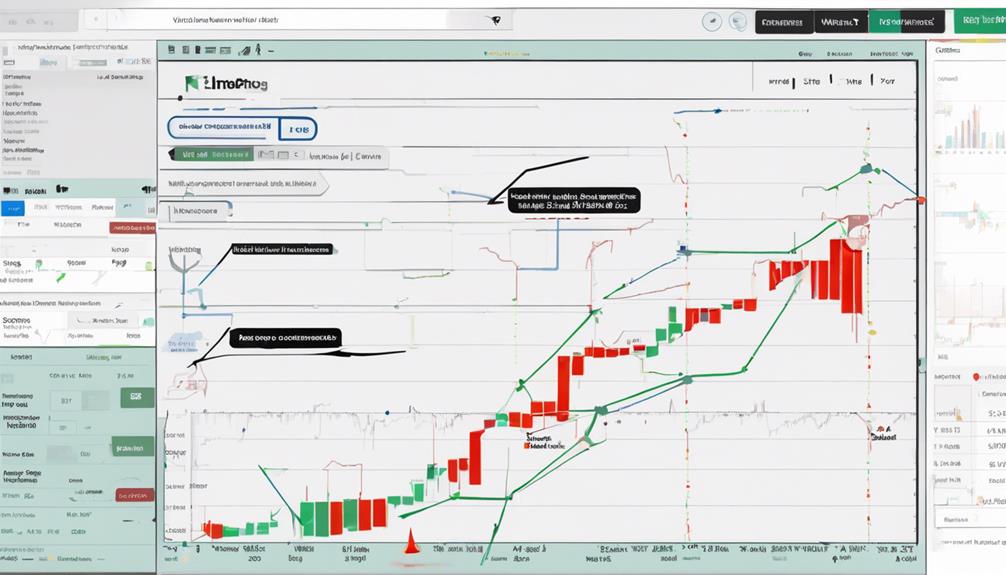
Understanding the Ease of Movement Indicator can provide insightful analysis into price movements based on volume dynamics. This indicator measures the relationship between price changes and trade volume, helping traders identify the ease of stock price movement. By considering both price and volume, it assesses how easily prices move, making it a valuable tool in technical analysis.
Here are five key points to grasp about the Ease of Movement Indicator:
- Evaluates the strength and sustainability of price trends.
- Gauges the level of buying or selling pressure in the market.
- Helps confirm trends for entry and exit points.
- Provides signals such as buy signals based on price moves.
- Assists in understanding the ease of stock price movement based on volume trends.
Leveraging Negative Volume Index
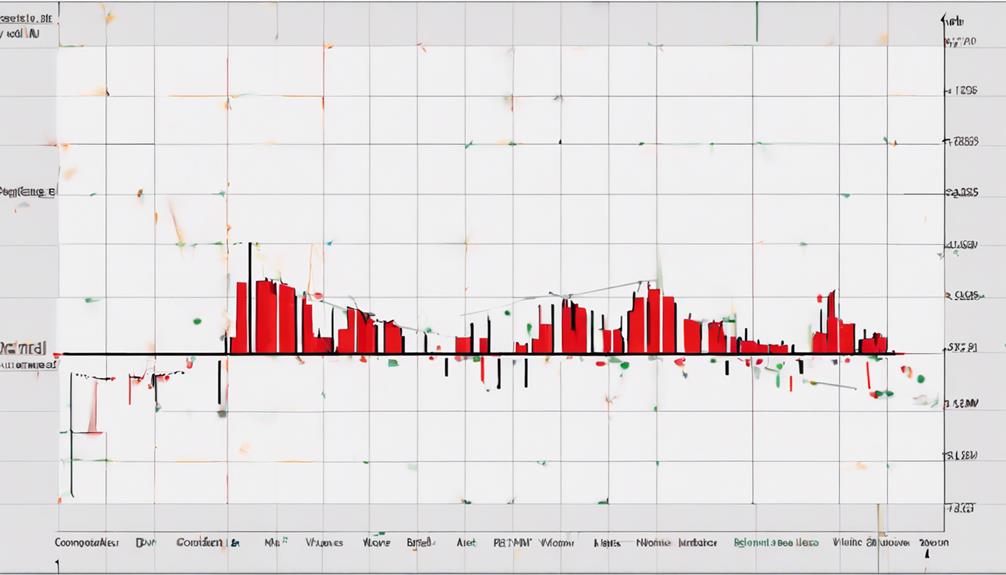
Leveraging the Negative Volume Index (NVI) offers traders a valuable tool for identifying periods of smart money activity and potential reversal points based on volume dynamics. NVI, a cumulative indicator, helps pinpoint distribution phases where professionals strategically sell shares, often without impacting prices significantly.
By adjusting based on volume decreases compared to the previous day, NVI signals possible reversal points, aiding traders in gauging selling pressure strength and anticipating market movements. Understanding NVI not only allows insights into market manipulation but also provides strategic trading opportunities for traders looking to capitalize on shifts in volume dynamics.
Benefits of Volume-Weighted Average Price
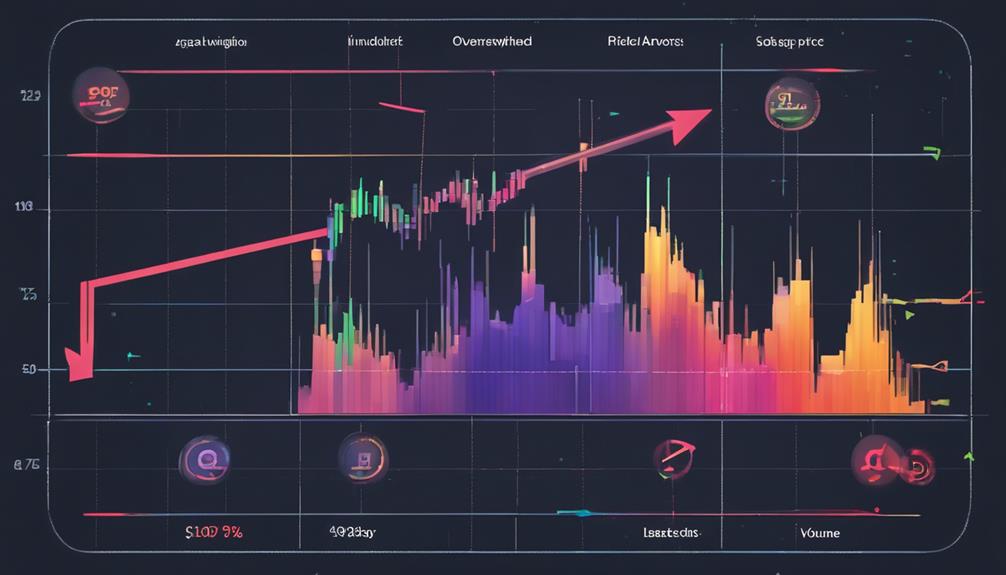
When considering the benefits of Volume-Weighted Average Price (VWAP), it's crucial to understand its significance in trading.
VWAP is a powerful tool that provides insight into the average price levels at which securities are traded, aiding traders in making informed decisions.
Importance of VWAP
Calculating the average price a security trades at, the Volume-Weighted Average Price (VWAP) is a crucial tool used by institutions to minimize market impact when entering or exiting positions. Buying below VWAP or selling above it helps institutions push prices back towards the average. VWAP is a valuable tool for trend confirmation on intraday charts. Rising VWAP indicates an uptrend, while declining VWAP suggests a downtrend in trading.
- VWAP calculates the average price considering both price and volume data.
- Institutions use VWAP to enter or exit positions with minimal market impact.
- Buying below VWAP or selling above it helps institutions push prices back towards the average.
- VWAP is a valuable tool for trend confirmation on intraday charts.
- Rising VWAP indicates an uptrend, while declining VWAP suggests a downtrend in trading.
Application in Trading
Considering both price and volume data, the Volume-Weighted Average Price (VWAP) provides traders with valuable insights into the true value of a security, making it a critical tool for informed decision-making in trading operations.
VWAP is especially beneficial for large-scale trading operations, as institutions use it to enter or exit positions with minimal market impact. Buying below VWAP or selling above it can help maintain market stability by pushing prices back towards the average.
On intraday charts, VWAP serves as a trend confirmation tool, aiding traders in assessing market sentiment and predicting potential price movements. By incorporating both price and volume information, understanding VWAP enables traders to make more accurate assessments of market trends and improve decision-making processes.
How Can Volume-Based Indicators Help in Mastering Keltner Channels Indicators?
Volume-based indicators play a crucial role in mastering Keltner Channels indicators. By analyzing trading volume alongside the Keltner Channels, traders can gain a deeper insight into market trends and potential breakouts. Understanding volume patterns can help traders make more informed decisions when utilizing mastering Keltner Channels indicators.
Frequently Asked Questions
How Do You Use a Volume Indicator Effectively?
To use a volume indicator effectively, identify buying/selling pressure trends, confirm price movements, and assess institutional activity. By understanding volume-weighted indicators like OBV and VWAP, you can make informed trading decisions and manage risks better.
What Is the Most Accurate Volume Indicator?
The most accurate volume indicator varies based on trading strategies. Common ones include OBV, MFI, VWAP, and Accu. Combining indicators offers better insights. Experimenting helps find the best fit for your style, analyzing trends effectively.
What Is the Best Moving Average for Volume Indicator?
For volume indicators like OBV, MFI, and VWAP, a 9-period EMA is often preferred to smooth out price and volume fluctuations. Experiment with different moving average periods to align with your trading style and desired sensitivity.
What Is the Best Trading View Volume Indicator?
In your trading journey, the best trading view volume indicator varies based on your unique strategy. Consider indicators like OBV, VWAP, and MFI. Experiment with combinations to gauge market sentiment. Understanding each indicator is key.
Conclusion
In conclusion, mastering volume-based indicators is essential for successful trading. By understanding the various tools like OBV, Volume by Price, and VWAP, you can make informed decisions and predict market movements effectively.
While some may argue that relying solely on volume indicators may not always guarantee success in trading, combining them with other technical and fundamental analysis can greatly enhance your trading strategies and increase your chances of making profitable trades.
